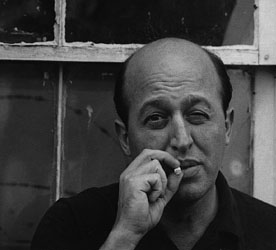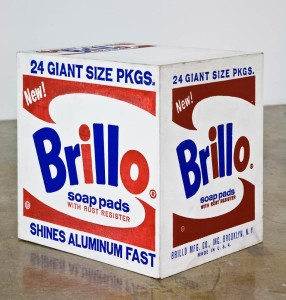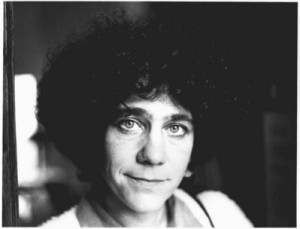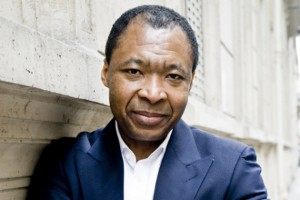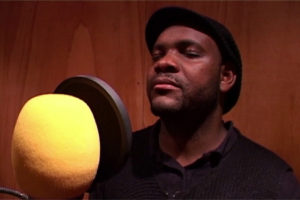The End of Art History?: Against Arthur Danto
These reflections were published in The Journal of Aesthetics and Culture, Vol 5., 2013 as part of “Autonomy, Pluralism, Play: Danto, Greenberg, Kant, and the Philosophy of Art History.” Download a pdf of the complete article here, or cite this post as: Buckner, Clark. “The End of Art History?: Against Arthur Danto.” www.clarkbuckner.com. Web. Day, month, year the post was accessed.
In apparent opposition to the modernist pursuit of autonomy, contemporary artists often no longer define their practices in terms of specific media; and artworks frequently are not easily distinguished from industrial projects, commercial advertising, social gatherings, and other aspects of everyday life. Accordingly, philosopher Arthur Danto famously concludes that art history has come to an end.[i] While some might mistake Danto’s declaration to be cynical, in fact, it’s celebratory. The modernist pursuit of self-definition was, according to Danto, misguided: the displacement of an essentially philosophical problem, provoked by a crisis in, what he takes to be, the conventional role of art to represent the world. By contrast, he argues, the apparent exhaustion of this pursuit in the pluralism of contemporary art made possible the proper, philosophical formulation of the problem of art’s definition, and emancipated artists to pursue their work without concerning themselves with the definition of their practices. Danto’s philosophy of art history serves as a necessary supplement to his ontology of art, and stakes a claim within philosophical aesthetics for best accommodating the seemingly open-ended diversity of contemporary art. But does Danto, in fact, do justice the pluralism of contemporary art that he purports to celebrate? By elevating art’s value to a point of philosophical principle and denigrating its aesthetic properties to a matter of empty indifference, doesn’t his declaration of the end of art, rather, do an injustice to the rich formalism of contemporary art and contribute to its misconstrual: as either the rhetorical vehicle for pre-conceived notions, or as mere entertainment?[ii]
The end of art is, for Danto, “the end of a certain story.”[iii] It is the end of modernism, which he explains as art’s pursuit of philosophical self-definition; and, in a postmodernist vein, he positions his theory of contemporary art’s pluralism in distinction from art critic Clement Greenberg’s now classical defense of modern art’s autonomy. He writes,
Greenberg and I see self-definition as the central historical truth of modernist art. But his narrative differs in every other respect from mine. He sees self-definition in terms of purity, and hence the history of Modernism as the pursuit of painting in its purest possible state: a kind of genre cleansing, as one might put it, a program easily politicized as aesthetic Serbianism.
In contrast to Greenberg’s modernist defense of art’s autonomy, Danto describes his own view as “altogether anti-purist” and he explains contemporary art as “objectively pluralistic.”[iv]
The struggle for philosophical self-definition was, for Danto, art’s history. It oriented the direction of art’s development, and gave stylistic unity to its distinct epochs. However, according to Danto, this struggle exhausted itself in the 1960’s with the complication of art and everyday life, paradigmatically marked for him by the advent of Pop Art. Because Pop Art was indistinguishable to the naked eye from everyday objects, Danto contends, it proved that art could not be defined aesthetically, and therefore could not be defined by artists. The burden of art’s definition was relinquished to philosophy. In fact, he contends, it was first properly presented to it – to him – as a matter of what he calls, “the non-identity of indiscernables,” in 1964, in the Stable Gallery, when he first confronted Andy Warhol’s Brillo Box.
Since the appearance of Warhol’s Brillo Box provides no clear way to distinguish it from commonplace objects, Danto argues that what constitutes the piece as a work of art is its situation in “the art world.” As a result, Danto frequently is credited with contributing to the development of, what has come to be known as, the institutional theory of art. However, Danto does not therefore understand artworks merely sociologically, as objects sanctioned by the artists, critics, dealers, and curators, who comprise the art world. To the contrary, he proffers an essentialist theory of art as “semantic vehicles,” which are not only part of the world, but also about it. Artworks, he contends, are distinguished from everyday objects by an act of “artistic identification” through which artists designate their works as art and invest them with meanings. He writes, “Interpretation is… constitutive, for an object is an artwork at all only in relation to an interpretation.”[v] And he explains the art world, accordingly, as the historical matrix of art theories.
Danto’s philosophy of art history provides a necessary supplement to his ontology of art by accounting for, what he takes to be, the development of the proper problem of art’s definition, and by explaining the aesthetic diversity of contemporary art – which he calls “art after the end of art” – as evidence of art’s fundamentally conceptual nature.[vi] But Danto does not therefore conclude that the work of contemporary artists is philosophical. To the contrary he contends that art has been freed of, what he calls, its “philosophical disenfranchisement” and so now continues independently from any demand for self-determination. In the wake of Warhol, he argues,
Artists no longer needed to be philosophers. They were liberated, having handed over the problem of the nature of art to philosophy, to do what they wanted to, and at this precise historical moment, pluralism became the objective historical truth.[vii]
While initially, he despaired this post-historical condition as a “dismal” state of “vanished vitality” Danto subsequently has come to relish in it.[viii] Freed from the burden of philosophical self-definition, he argues, contemporary artists now work in a “spirit of absolute free play.”[ix] And, rather than required to stake his claim as a critic, he contends, “I have no grounds for excluding anything… I can like it all.”[x]
In the introduction to their edited collection of Danto’s essays, philosophers Gregg Horowitz and Thomas Huhn summarize, “Art has been freed of its hidden agendas, …and so, too, has criticism been liberated by leaving behind its hunt for the truth in art…. The space of taste’s freedom becomes a reiterated space of pure self-determination, which it remains to critics to claim.”[xi] However, insofar as Danto’s “emancipation” of art from philosophy is purchased at the expense of the value of aesthetic judgment in its estimation, Danto compromises what he purportedly accomplishes. Rather than liberated from the strictures of philosophy, the “space of taste’s freedom” is closed as a condition of Danto’s ontology of art.[xii] “The age of pluralism is upon us,” writes Danto, “It does not matter any longer what you do, which is what pluralism means.”[xiii]
As a result, Danto’s philosophy of art history fails to do justice in particular to contemporary art, which has exhibited a flowering of richly formalist artwork in the twenty-five years since he first drafted his philosophy of art history.[xiv] Registering this development, art historian Johanna Drucker writes,
A renewed studio culture is flourishing. Making objects with evident appreciation of process has pushed traditional techniques into a highly charged exchange with new media capabilities. Materials and structures have never been more varied. Nor has the license to use them ever been so broad.[xv]
Of course, Danto is not blind to these changes. To the contrary, they are integral to the shift in his attitude towards contemporary art. However, insofar as Danto takes the explosion of new artistic forms to be symptomatic of art’s liberation from the purportedly philosophical demand for self-definition, he only can accommodate the aesthetic diversity of contemporary artworks, by simultaneously denigrating the significance of their particular aesthetic qualities.
Beyond failing to account properly for the resurgent formalism of contemporary art, Danto’s denial of the persistent problem of aesthetic autonomy furthermore contributes its misconstrual. On the one hand, while he maintains that artists no longer need to be philosophers, by arguing that artworks are defined by their theoretical interpretation, Danto reduces them to rhetorical vehicles for heteronomous concepts, reinforcing the tendency to treat art as not only as misplaced philosophy but still more often – in essentially historicist terms – as pseudo-sociology. He writes, “We cannot be deeply wrong if we suppose that the correct interpretation of object-as-artwork is the one which coincides most closely with the artist’s own interpretation.”[xvi] On the other hand, insofar Danto displaces the value and significance of artworks onto concepts he reduces the qualities of their appearance to nothing more than distraction or sophistry, reinforcing the tendency to treat art as a poor cousin of the entertainment industry. At best, he contends, art is reduced to rhetoric or remains to serve the “abiding human needs” for “decoration, self-expression, [and] entertainment.”[xvii] What Danto celebrates as the liberation of art from its philosophical disenfranchisement thus amounts rather to its highest expression, insofar as it requires first affirming the confusion of art and philosophy as the truth of art’s history, in order then to “resolve” it – and so assert their disjunction – by displacing the value and significance of art onto philosophy.
The failure of Danto’s declaration of “the end of art” to address the complexities of contemporary art thus requires revisiting the philosophy of art history on which it is based. If the distinction that he draws between the modernist pursuit of self-definition and the pluralism of contemporary art does not hold, how might their relationship otherwise be conceived?
[i]Arthur Danto, “The End of Art,” in The Philosophical Disenfranchisement of Art (Columbia University Press, New York, 1986) 81.
[ii] Of course, by reformulating the problem of self-definition in art history as a distinctly aesthetic concern, these reflections do not therefore suggest, or otherwise entail, an alternative ontology of art. To the contrary, they first and foremost oppose the subordination of art’s history to philosophical ontology.
[iii] Arthur Danto, “Art After the End of Art,” in The Wake of Art, ed. by Gregg M. Horowitz and Tom Huhn (G and B Arts International, Amsterdam, 1998) 119.
[iv] Ibid., 121 and 123
[v]Arthur Danto, “Appreciation and Interpretation,” in The Philosophical Disenfranchisement of Art, (Columbia University Press, New York, 1986) 44
[vi]Arthur Danto, “Art After the End of Art,” in The Wake of Art, ed. by Gregg M. Horowitz and Tom Huhn (G and B Arts International, Amsterdam, 1998) 115 – 128. Of course, in Danto’s own terms, characterizing contemporary art as “after the end of the end of art” is something of a misnomer. For, directly correlative to his declaration of the end of art history, Danto claims to establish the ontological definition of art’s essence. In his work, the end of art history is thus its philosophical apotheosis: theoretically guaranteeing its metaphysical autonomy for all time.
[vii]Arthur Danto. “Learning to Live with Pluralism,” in in The Wake of Art, ed. by Gregg M. Horowitz and Tom Huhn (G and B Arts International, Amsterdam, 1998) 89
[viii]Arthur Danto, “The End of Art,” in The Philosophical Disenfranchisement of Art (Columbia University Press, New York, 1986) 81.
[ix]Arthur Danto, “Art After the End of Art,” in The Wake of Art, ed. by Gregg M. Horowitz and Tom Huhn (G and B Arts International, Amsterdam, 1998) 128; and “The End of Art,” in The Philosophical Disenfranchisement of Art (Columbia University Press, New York, 1986) 114
[x]Arthur Danto. “Learning to Live with Pluralism,” in in The Wake of Art, ed. by Gregg M. Horowitz and Tom Huhn (G and B Arts International, Amsterdam, 1998) 95
[xi] Gregg M. Horowitz and Tom Huhn, “The Wake of Art: Criticism, Philosophy, and the Ends of Taste,” in The Wake of Art, ed. by Gregg M. Horowitz and Tom Huhn, (G and B Arts International, Amsterdam, 1998) 6
[xii] Accordingly, Horowitz and Huhn couple their endorsement of Danto’s philosophy of art history with a critique of its implications for contemporary art’s critical reception.
[xiii]Arthur Danto, “The End of Art,” in The Philosophical Disenfranchisement of Art (Columbia University Press, New York, 1986) 115.
[xiv] Furthermore, despite the utter formlessness of his philosophy of contemporary art, in the decades since Danto formulated his philosophy of art history, the aesthetic complexity of extra artistic phenomena has infiltrated the world of fine art in ways that his ontology of art can’t accommodate. Not only do artists today frequently traffic in everyday objects, as Danto explains with his theory of the “transfiguration of the commonplace,” through the nomination of “artistic identification,” so do curators and art historians. While including these extra-artistic phenomena squarely within the artworld, however, they do not therefore elevate them to artworks, as Danto’s essentialist theory suggests; instead, they put them into productive tension with artworks within the broader field of, what has come to be called, “visual culture.”
[xv] Johanna Drucker, Sweet Dreams: Contemporary Art and Complicity, (The University of Chicago Press, Chicago, 2005) xii.
[xvi] Arthur Danto, “Appreciation and Interpretation,” in The Philosophical Disenfranchisement of Art (Columbia University Press, New York, 1986) 44.
[xvii] Arthur Danto, “The End of Art,” in The Philosophical Disenfranchisement of Art (Columbia University Press, New York, 1986) 115


